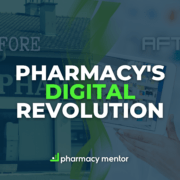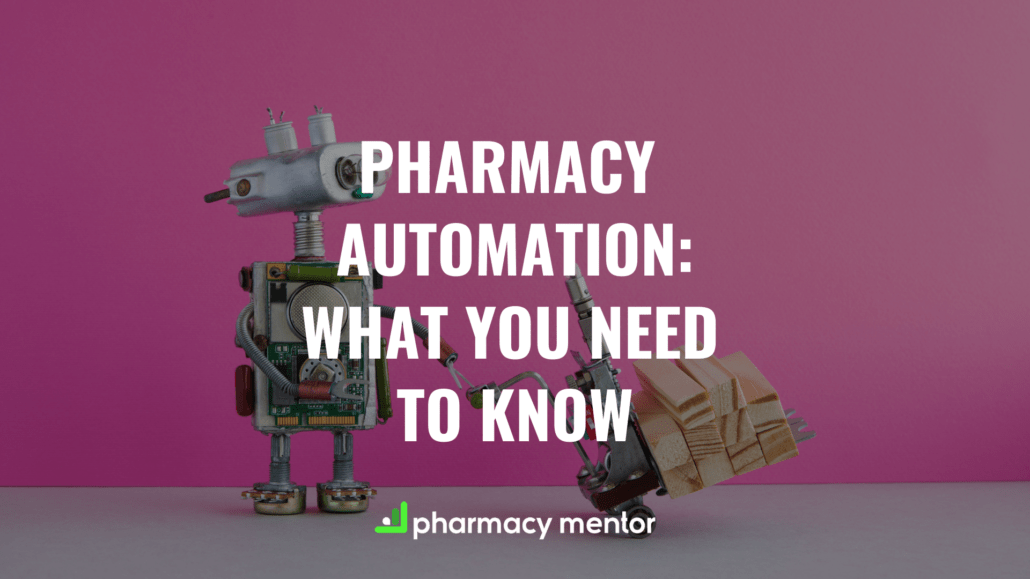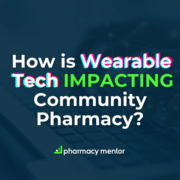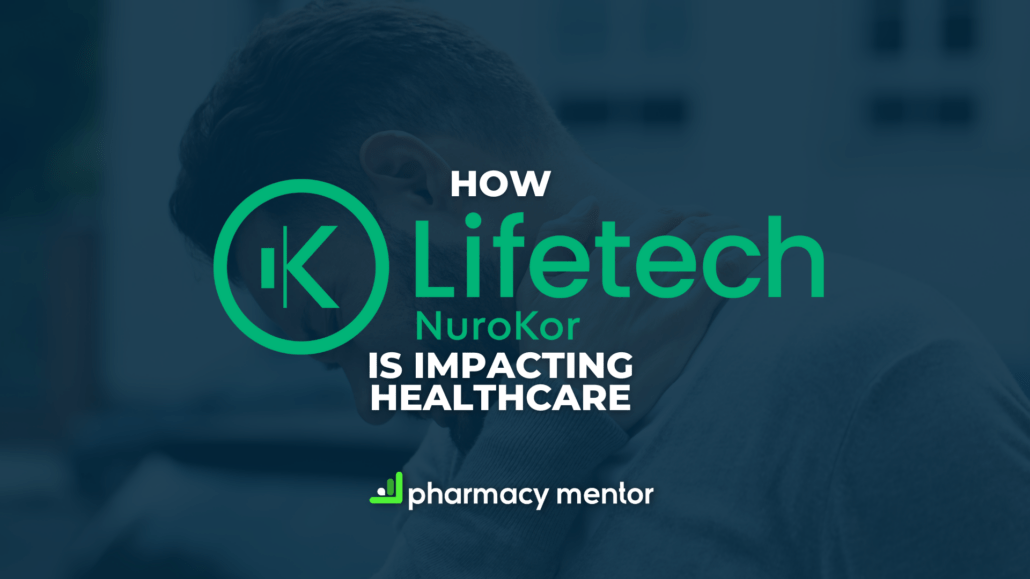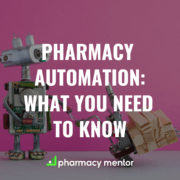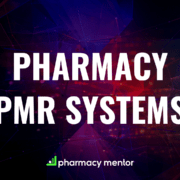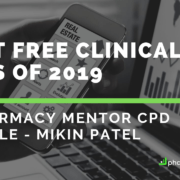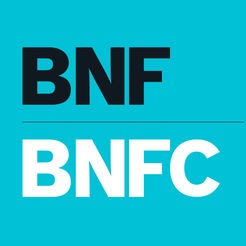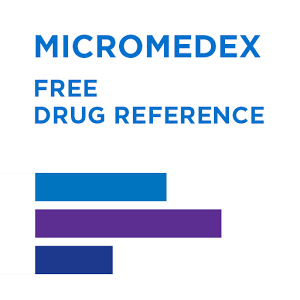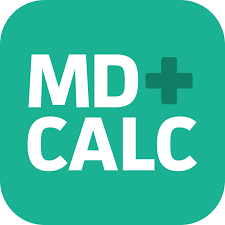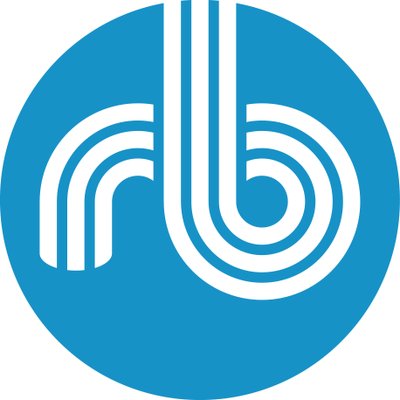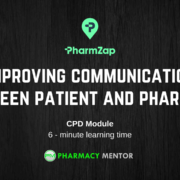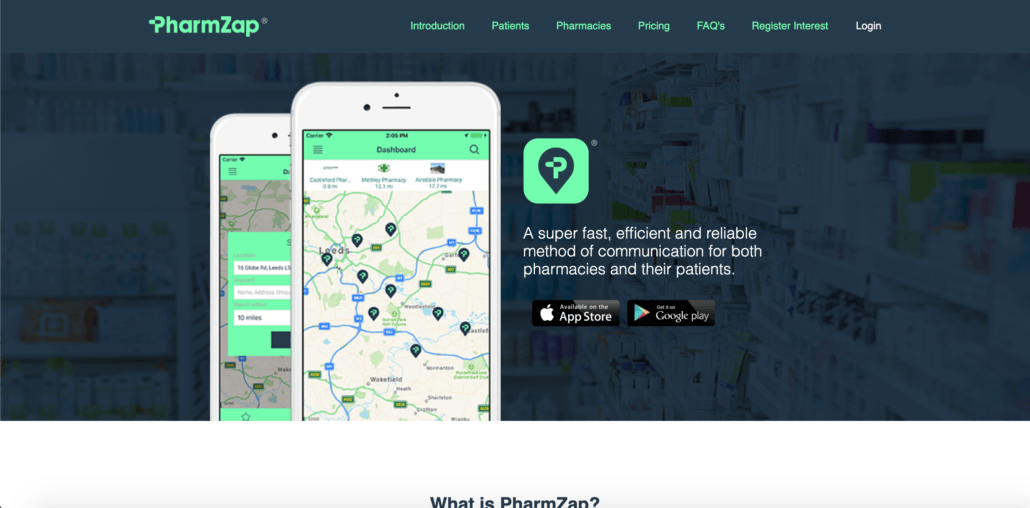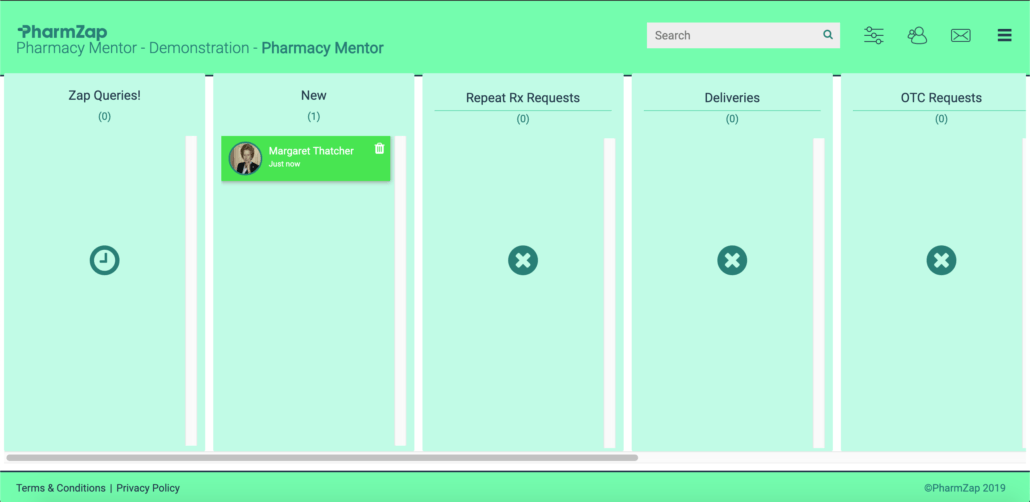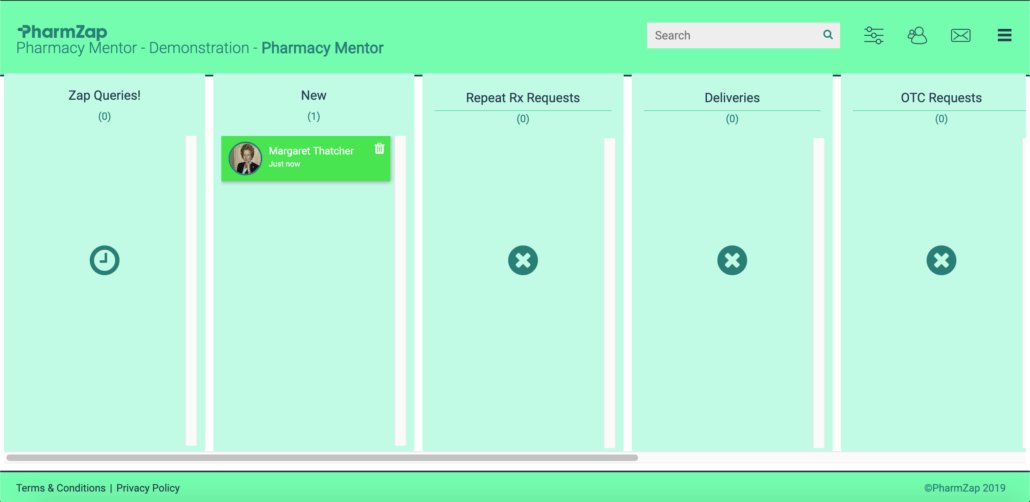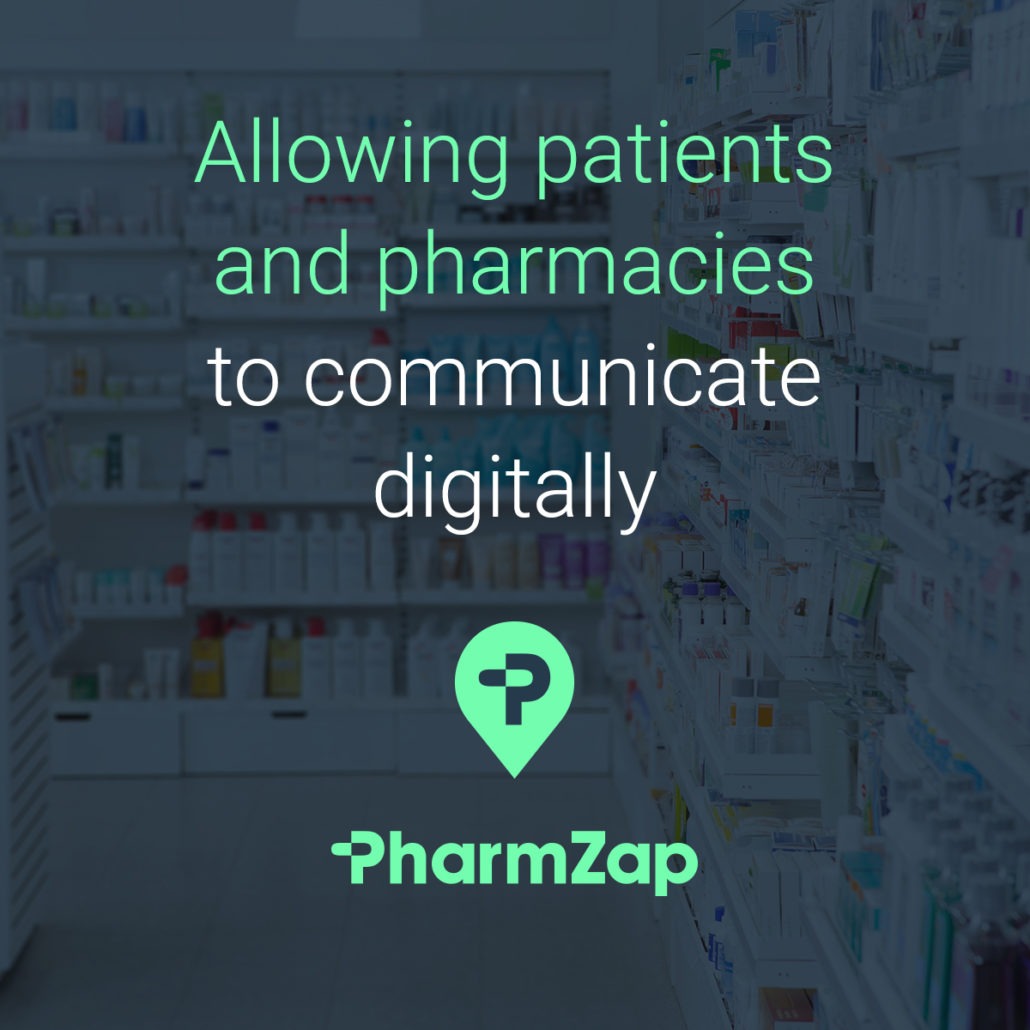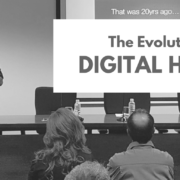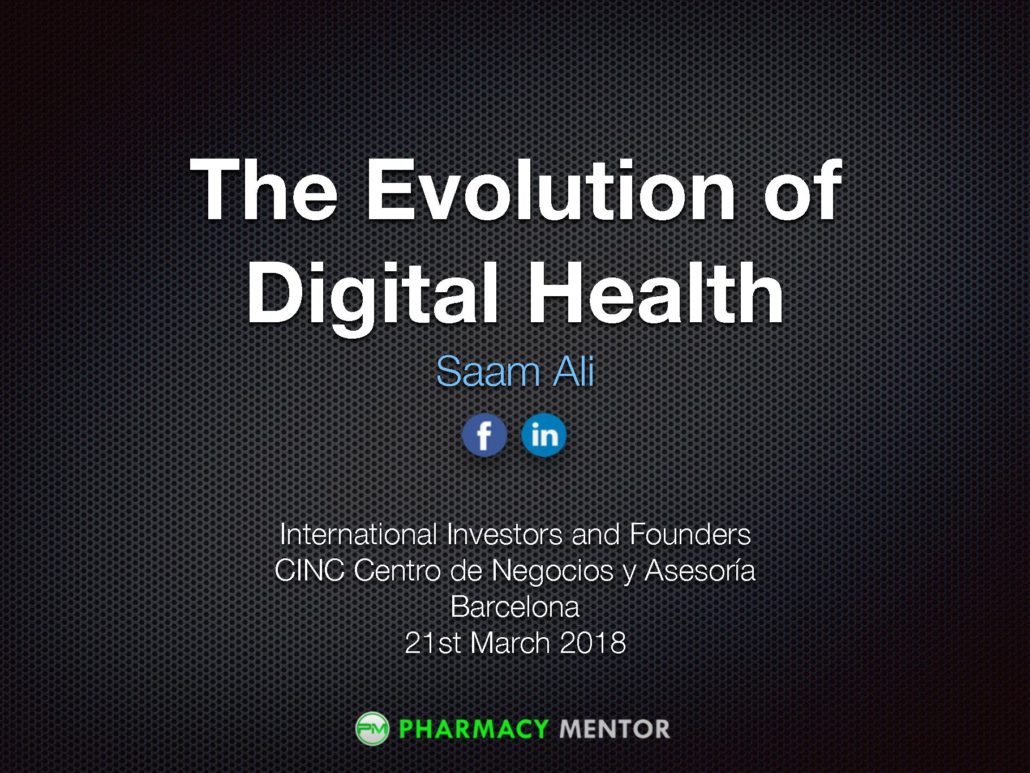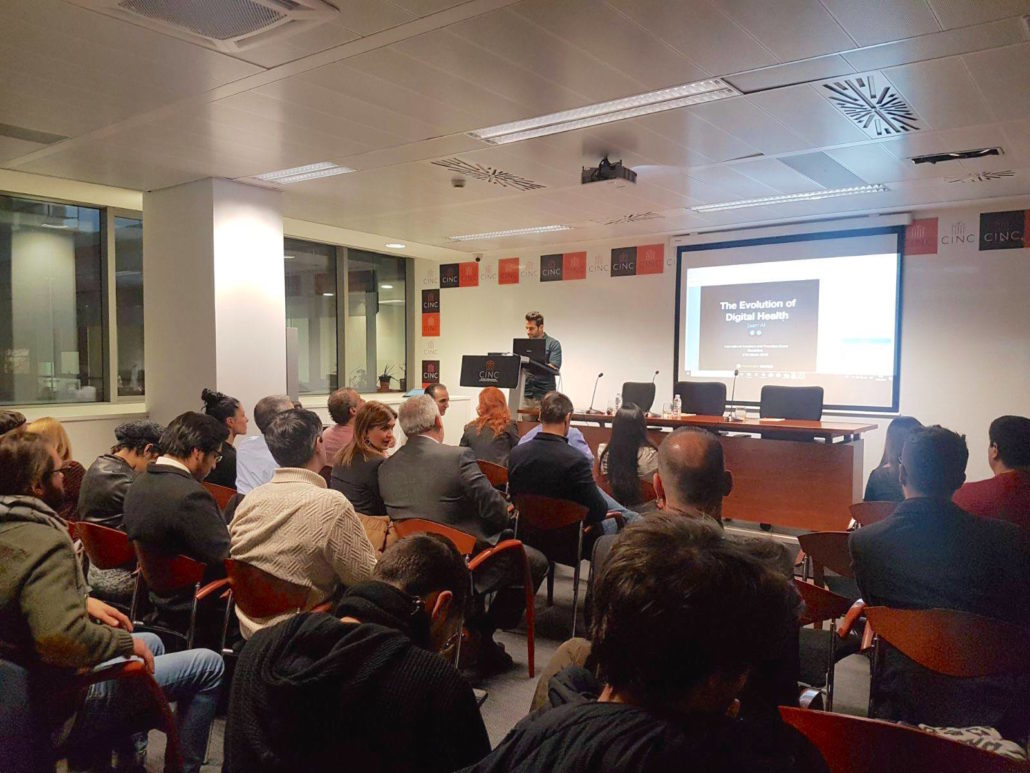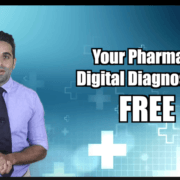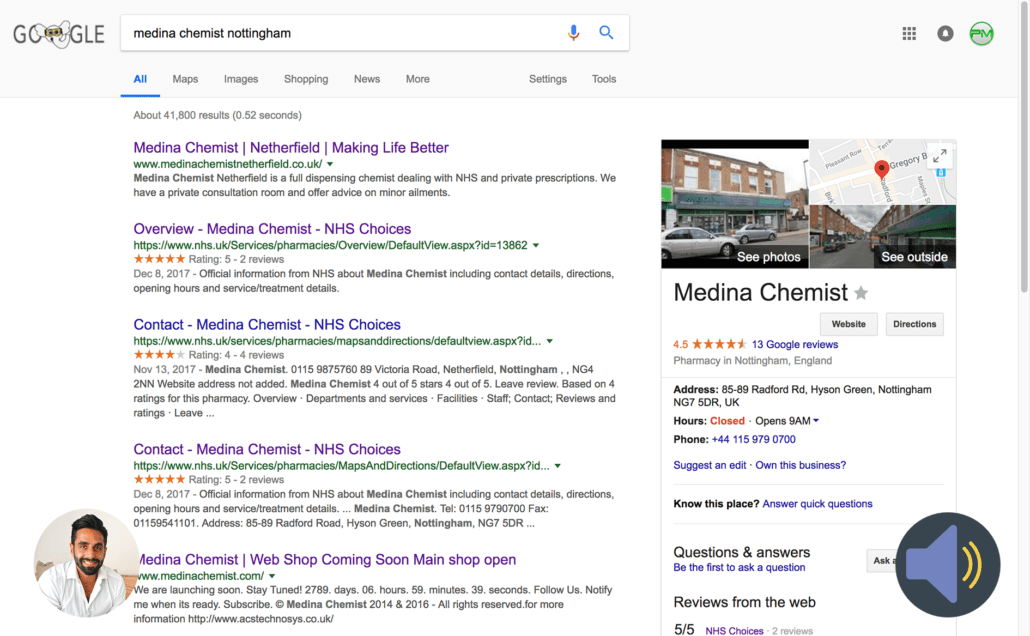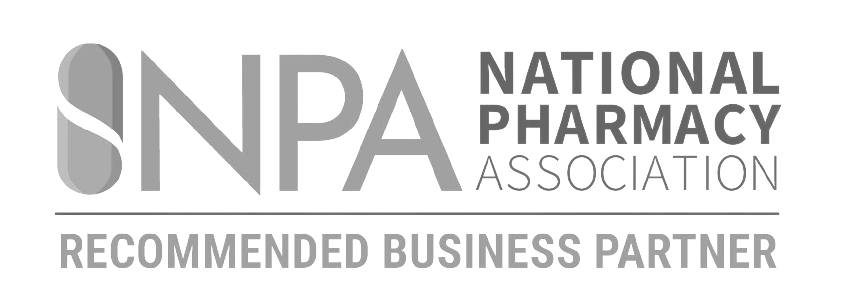CLICK THE IMAGE BELOW TO ACCESS THE LECTURE SLIDES
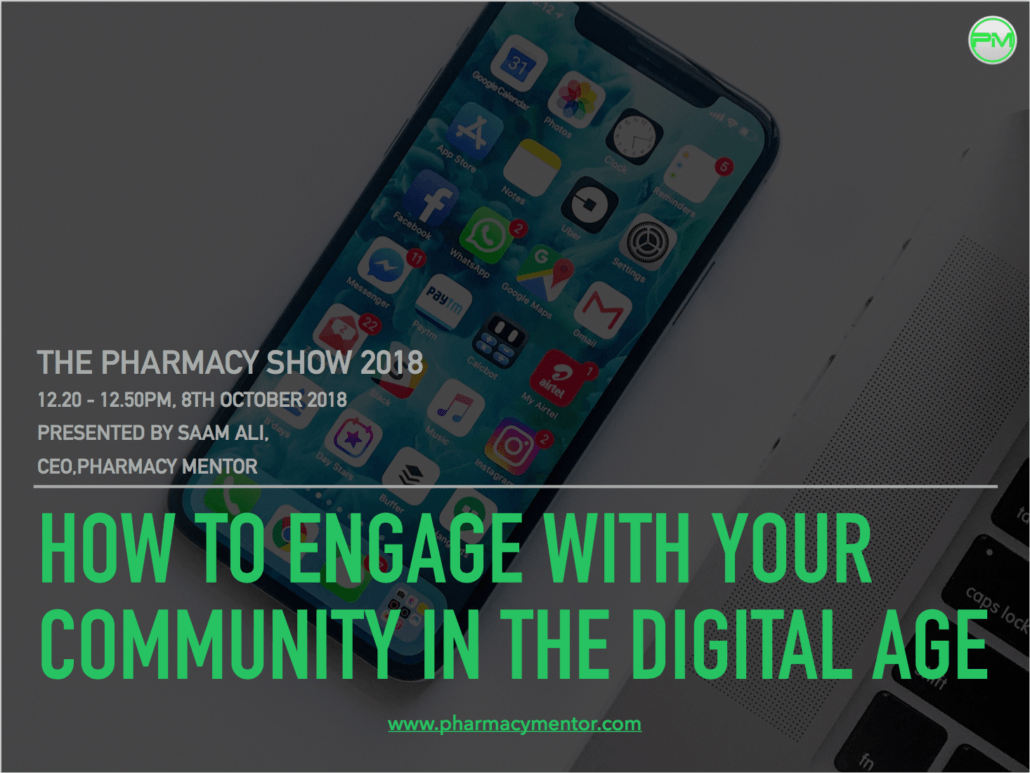
How to Engage with your Community in the Digital Age
The Digital Age. It’s such a buzzword these days. I harp on about it all the time I suppose. But there is a reason. I’m not preaching for the sake of it. I’m shouting out about it because Community Pharmacy needs to hear it. Again and again, and again. Until it sticks.
October this year was a busy one. I spoke at the Pharmacy Business Conference, the NPA Conference, and The Pharmacy Show about how to Embrace your Community in the Digital Age. Essentially, I spoke about the importance of digital marketing for Community Pharmacy, how pharmacists can use these channels and what kind of result you’re likely to see if executed well enough.
Below is the manuscript for this particular talk, spoken at the Business Theatre at the ever eventful Pharmacy Show 2018. Please do get in touch with me if you’re thinking about marketing digitally to your Community.
Slide 2
The smartphone has completely changed human behavior. It’s changed the way we walk. Pre-mobile, human beings used to walk safely, in a straight line, conscious of the destination ahead of us. Post-mobile, this simple task has become a real safety hazard. In America, it’s estimated that around 6000 accidents happen every single year due to texting and walking. We’re completely oblivious to the world around us.
It’s changed the way we wake up in the morning too. How many of you, before you do anything, reach for your mobile and start scrolling in bed? I know a lot of you do because I do it too. In fact, I’ve had to work really hard to change my habits recently because my partner believed I was having an affair…..with LinkedIn.
And of course, it’s transformed the way we communicate. Social Media and Apps have made cellular data a thing of the past and are now the primary way we talk to each other. It’s staggering to think how many social channels of communication we use through our mobile every day. Facebook, Facebook Messenger, Whatsapp, Instagram, LinkedIn, Snapchat – the list goes on.
Slide 3
Here are just some of the latest statistics around the use of mobile and Social Media in the UK that will help you understand its influence better:
- 53 million of us (that’s 80% of the whole population) use the internet through our mobiles and 44 million are active social media. We spend on average around 5 hours a day on the internet and 2 hours a day on Social.
- Smartphones are responsible for 38% of the total web traffic, which is a 10% increase year on year, while on desktop, although the share is larger at 51%, this is actually a reduction of 3% year on year. It won’t be too long before mobile traffic overtakes.
- And 44 million of us use Facebook every month, 86% of which use it through their mobile and around 500,000 new people aged over 55 become active on Facebook, every single year. My mum, who’s aged 68, is an addict. A Facebook addict that is. It’s frightening how quick she responds to a post I put up online.
Slide 4
The point I’m making here is that the smartphone and social media are now fully integrated into human nature and affects pretty much every aspect of our lives. It’s altered the way we conduct our business and leisure and has a huge impact on our decision-making process.
That’s precisely why businesses incorporate these things into their overall business model. It’s the quickest way to communicate with their customer, let alone the most cost-effective.
Slide 5
In terms of a Community Pharmacy, communicating with a customer or patient digitally offers plenty of benefits:
- It means we can talk to them beyond our four brick walls. We can talk to them actively in real-time and we can talk to them passively, 24-hours of the day, just by having content up online – such as a website.
- We can talk to 10,000 people at the same time who live all around your pharmacy, at the simple click of a button.
- If you’re looking to promote the new pregnancy pillow you just got in stock, you can choose to talk to only 100 of those 10,000 people who are women and who are likely to be pregnant.
- And you can track how well you’re communicating the pregnancy pillow to these people.
- Talking to people digitally can drive them to take action online or walk into your store.
- You’ll save money on paper and traditional marketing methods.
- And finally, it allows you to compete against other organisations offering similar services and who are talking to their customers digitally.
Slide 6
Engaging with your customers and patients in this manner is part of the vast sphere of Digital Marketing. This isn’t a new concept. It’s been around since the 1990’s when email first became free for the public to use, Google was born and the world was experiencing the dot-com boom.
However, Community Pharmacy, particularly the Independent Sector has never really grasped Digital Marketing. There remains a big pandemic of a lack of online presence and it’s easy to understand why. For years and years, we simply didn’t need to market ourselves so much. We were doing just fine organically from dispensing items. Good customer service, in-store marketing and a good relationship with the Dr was doing the job, so why change?
However, with the evolution of Digital Health and mobile technology in recent years, our health demands have changed. We want to communicate with a healthcare professional right away. We want our medicine to be delivered to our door and the very next day. And we want to access healthcare services as quickly as possible.
While elements of the previous business model we adopted are undoubtedly important, we must now incorporate digital health into the overall strategy and a significant arm of that involves digital marketing.
Digital marketing must be involved in protecting your business from the emerging competition who are providing similar services more conveniently. It must be involved in generating new streams of income to counteract the significant loss in dispensing fees we suffered not so long ago. It must be involved in effectively engaging with your Community now and in the future.
Let’s take a look at how digital marketing can be applied to your business and what opportunities will exist for you…
Slide 7
Just before I get into the juicy bits, let me give you a 30-second synopsis of me and what I do. I’m a Community Pharmacist of 12 years and counting, but in 2014, I took a break from practice and dived head first into online and technology sector. I taught myself how to build websites, learned how to create high-quality digital media and have been perfecting digital marketing ever since.
At the beginning of 2017, to help with the pandemic I explained earlier, I launched a digital marketing agency that focuses primarily on the Community Pharmacy sector. Through trial and error, keeping up to date with the latest social and digital trends, and evaluating data and feedback, we know which channels make a real difference to your pharmacy business.
Slide 8
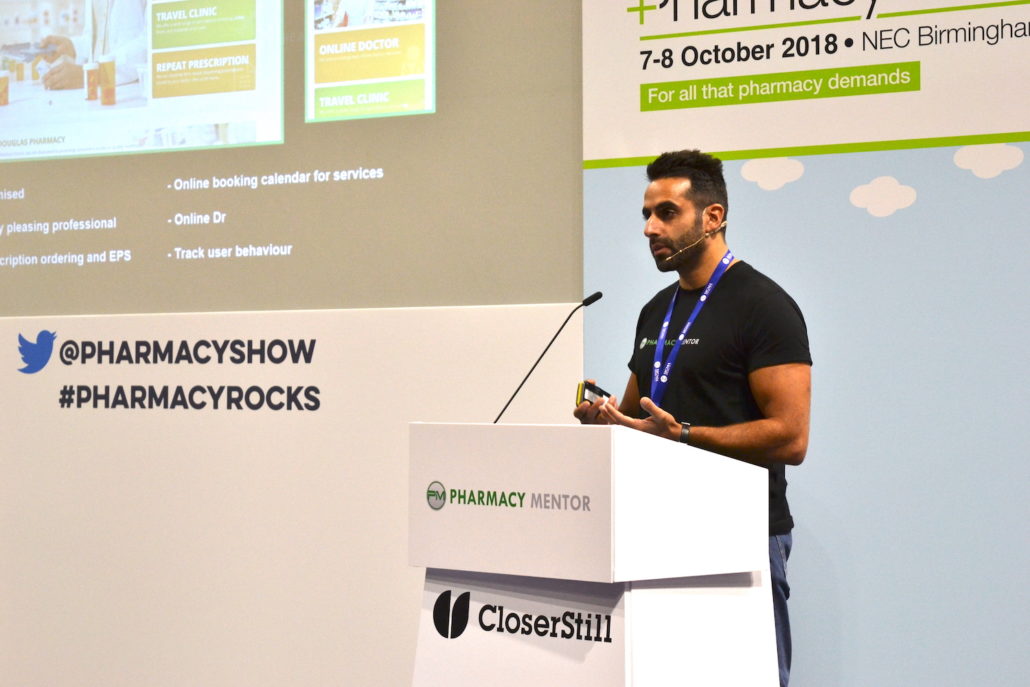
Speaking at the Pharmacy Show 2018
Now, first and foremost, you need a website. Think of this as the central hub for your digital marketing activity and your digital shop window. This tool is what is going to speak to your customers 24 hours a day and it allows for an abundance of interactivity.
Take a look at this example of a good, very affordable Community Pharmacy website.
- It’s mobile responsive, which is absolutely mandatory today. A customer will turn away if they have to pinch the screen to zoom in on things. Google also penalises websites that aren’t mobile responsive too.
- It’s very well presented, clean and professional. You know the saying… “ A first impression always counts always counts”. Well, it applies to your website too. A website like this gives the user confidence from the word “go”.
- It allows for the user to nominate the pharmacy for EPS right from the website itself without the need to fill in a paper form.
- Users can also sign up and reorder their prescription on the go, catering to how we behave right now.
- They can also book an appointment for the Travel and Flu clinic without the need to call the pharmacy.
- The integration of these PGDs makes this business an all-round holistic health centre. An Online Doctor functionality allows for many prescription items to be sold digitally.
- And of course, all activity can be tracked on a website because of the data it creates. Google Analytics can help us with this and will tell us what’s working and how customers are behaving.
-
But there remains a problem. It’s fantastic that we can provide all these wonderful services, but they render useless if people don’t know they exist.
Q. So, how do we get more people to know about and use these services?
Well, we have to shout out about them, consistently. Let me show you how you can do that…
Slide 9
Creating good quality content in the form of a blog, which is usually incorporated into your website, will help people find your services much more effectively. That’s because it caters for how we are searching for services in the first place.
3.5 billion searches are made on Google every day. When people are looking for a service they want to use today, they don’t type the name of a business into Google, they type exactly what service they want to find. We call these search terms, “keywords”.
This is a blog for a pharmacy down in Luton. We developed a blogging calendar to create articles focusing on the “keywords” that would promote the services they offer in store. One of those services is the morning after pill service. So we created and optimised an article for the keyword “morning after pill Luton” – that’s what people are searching for online in Luton.
After only 3 weeks of publishing, the blog post positioned itself high on the first page of Google. This means that every time someone searches for this specific term, they’re likely to see this article. We just positioned this pharmacy service ahead of Boots, Tesco and Lloyd online.
And the analytics tell us everything. Eight people clicked onto the article last month from the 63 impressions it received. With the correct optimisation, you can position all of your pharmacy services like this. More visibility means more traffic, which increases the likeliness of conversions.
Slide 10
On the subject of Google, your Google My Business profile is an equally effective, if not more important marketing channel.
When you type the exact name of your business into Google, you’ll see a profile appear, like the one you can see in the corner of the map there. It holds vital information regarding your pharmacy. That’s your Google My Business profile.
Question. How many of you have owned and verified your pharmacy on Google?
For those of you that haven’t, you could be losing business.
You see, Google automatically populates information about your pharmacy on your profile, according to what they know. But, that information can be inaccurate. Wrong opening times and contact information is a very popular one I see. You can only manage that information if you’ve owned and verified it.
If you can understand that your profile is viewed literally 1000’s of times every month, then you’ll know how important this is. You can also add photos of your pharmacy and you can even add secondary categories to your profile too.
For example, this pharmacy down in Birmingham is also a travel clinic. So, in addition to the primary category, which is a pharmacy, we’ve added the secondary category as a “travel clinic”. So, now, when someone types in “travel clinic south birmingham” into Google Maps, this pharmacy will appear as a listing, nicely trumping its competition with all those stars there from customer reviews.
This tool also allows you to publish posts and it’s continuously being updated with a load of cool features. For example, only recently did they add a “services” functionality to the profile, which is perfect for a Community Pharmacy.
Slide 11
Another channel which I class as “essential” for Community Pharmacy is Facebook. Now, I won’t go into too much detail with this social media channel because it’s functionality and marketing tools are so vast that I’d need another 30-minute slot to fit it in.
Rather, I’m just going to focus on the most important aspect of Facebook for Business today, which is, Facebook Ads. Paid advertising on Facebook is without a doubt the most effective and cost-efficient way to reach your preferred type of customer, and lots of them.
Why?
Because Facebook knows everything about you. Your gender, your age, where you live, where you work, where you have been on holiday and that you prefer to read articles from Pharmacy Mentor rather than the Chemist and Druggist. The amount of data it holds about you is scary.
As an example of how effective Facebook Ads can be, we created an Ad for a pharmacy, again, down in Birmingham, to promote the launch of its travel clinic. We spent £10 and targeted only the people within a 10-mile radius of the pharmacy, between the ages 18 and 65, and who are interested in travel topics. Two days after publishing, the pharmacy sold £400-worth of Travel Health products to a single customer. And we know that this sale was attributed to the Ad because we asked the guy how he knew about the service.
As another example, for a pharmacy down in Colchester, we pushed a £50 Ad to promote the launch of their travel clinic, targeting similar demographics. The Ad reached 19,000 people in the area, and in that first month, the pharmacy completed 11 consultations and totaled £1,200 net profit. Again, we know the Ad influenced people because we asked them how they knew about the service.
Now, Facebook Ads work even better when they are linked to another digital channel where an action can be performed. For example, we can track how many people will fill out your travel consultation form, which will give us even more accurate data.
Facebook is an extremely innovative tool. They’ve recently released a new Ads objective which is designed to increase visits to your store. This means you can create an Ad that will only be pushed out to a person when they reach a certain proximity to your pharmacy. And Facebook will track, through geolocation technology, if that person went into your store because of that Ad. Really clever stuff and that just shows you how advanced advertising is becoming.
Slide 12
The last Channel I want to dive into at this depth is LinkedIn. Now, a lot of pharmacy owners question this tool, so let me explain how it can benefit you. Every Social Media channel has its own unique set of demographics and functionality.
For Instagram, the younger female demographic represent most of its user base, and it’s heavily image-based.
For Pinterest, only 7% of users are men, the median age is 40 and again, content is only images and videos.
But for LinkedIn, most users are professionals and it’s excellent for building relationships and growing a network of people that matter to you. So, who matter to you and your Pharmacy?
- People in the locality do
- Businesses in the locality too
- Care Homes
- Hospitals
- GP Surgeries, and whoever else you think a relationship would benefit your business
So, connecting with all of these guys on LinkedIn will allow you to begin building better relationships which develop leads.
As a prime example for this time of year, LinkedIn will be great for pushing your flu jab service.
Take a look at this pharmacy. We began pushing out content promoting a Corporate Flu Vaccination Service, where the pharmacist would set up a clinic at their place of work. After only one published post, we received an email inquiry from a company we’re connected with. We’ve now secured a date to vaccinate a potential 80 staff.
LinkedIn also allows you to message people directly which is a brilliant way to develop relationships. Think of this as the new way of direct outreach, taking the place of cold calling and email.
As an example, say you’re looking to attain more Care Homes for your business. Connect with all the Care Home managers in your region (and they are on LinkedIn) and send them a message to say hello. Because they can see who you are from your profile, you’ve already developed an element of trust. That’s the beauty of it. From there, you can begin to offer your services and they’re more likely to do business with you. As you know, business is all about building long-lasting, good relationships and LinkedIn is a great tool for it.
Slide 13
Now I’ve only mentioned a handful of channels here but there are plenty, plenty more. I just don’t have time to go through them all right now.
However, let me give you a brief insight into some other tools that can be considered:
- Email marketing is huge and can have a serious impact on a business, but is complex and requires time.
- So, an alternative to this could be using the digital loyalty scheme from Swipii, who market by email for you.
- Pointy is a product that helps increase the visibility of your shop products on Google by creating a listing for each of them online.
- PharmZap is a new app that allows for easy communication between patient and pharmacy.
- WhatsApp Business has been specifically designed for Small Business owners, such as pharmacies. I reckon this could be very powerful for us because everyone use WhatsApp.
- Pharmacy Flu Jabs is an online flu jab directory that helps market your flu jab service.
- Instagram, particularly using Ads, can be a very powerful brand awareness tool.
- And don’t forget your NHS Choices profile too. It’s a marketing channel. Upload images, videos and increase your 5-star reviews to help influence the user to use your services.
Slide 14
I sometimes see, on Social Media, funnily enough, other pharmacists criticising digital competitors, which makes me a bit sad. These competitors are simply responding to the problems that people face in the current health system and their demands. The fact is, we want to be treated quicker than ever before and the process to be as simple as possible. Fair play.
But Community Pharmacy, rather than be phased by this, should see them as a catalyst for action. We need to protect and influence the people and businesses around us – not nationally.
Those companies cannot offer the most valuable form of patient care, which is, face-to-face care. They can’t protect them against the flu this winter nor immunise them before they go travelling. Your pharmacy has a great deal to shout out about and by harnessing some of these digital tools, you can provide the best of both worlds to your community.
Slide 15
I hope that, from what you’ve seen in this presentation today, it’s clear that the smartphone, it’s apps and social media represent a significant opportunity for Community Pharmacy. They are part of Digital Health which is right now and the future. For the effective sustainability and growth of your business, they should absolutely be considered as part of your overall strategy.
Some of you will probably be thinking “Well, how on earth am I going to implement all of that? I don’t have the time nor the skill to execute.” You’re right. Time is a huge limiting factor. But digital marketing is a journey, not a sprint. It can be implemented gradually and adjusted accordingly so you’re only focussing on the things that work.
If you can do some of it, or a competent member of staff could take some tasks on, then that’s great. And of course, you have external help too. You know more than me that it’s all about utilising every possible resource you have available.
I must also emphasise on the word “strategy”. For pretty much any business activity, following a strategy always churns out better results. The same goes for digital marketing – plan it into the business model and then execute it.
And take note that the digital world is constantly evolving. So you must assess how well your strategy is working on a regular basis. The same strategy you were employing 6-months back will probably not work as well as it does today.
Think mobile. Think social. And drive your pharmacy into the digital future.
If you’d like to talk to me about getting digital, or anything related, please feel free to contact me and I’d be glad to assist you. Also, don’t forget to check out The Ultimate Guide to Driving Your Pharmacy Business in the Digital Age, a free 70-page manual, that is really helping pharmacists understand the importance of going digital and how to create a strategy going forward.
Thanks for visiting and see you in the next learning module!



